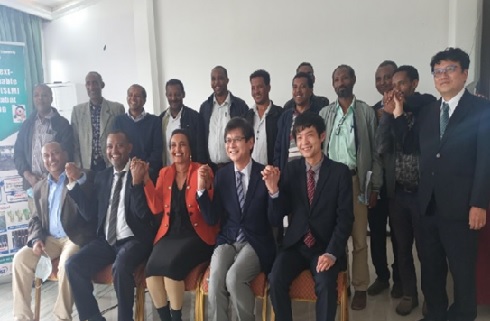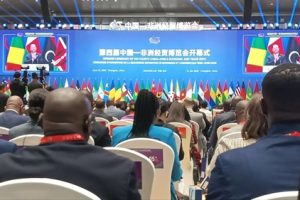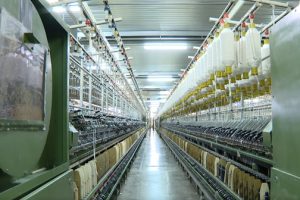
BY MENGISTEAB TESHOME
It is nearly four decades since modern technologies of land management have been introduced in Ethiopia, and over 400 years since traditional land management measures have been practiced in different parts of Ethiopia. The traditional as well as introduced practices, as a matter of fact have been concentrated in the lowlands and mid highlands of the country, which are characterized by low and erratic rainfalls, degraded lands and recurrent failure of crop production.
Many best practices have evolved in these areas but there is no recorded evidence which explains about their usefulness and applicability in other areas. Moreover, scaling up of the practices has been largely constrained by lack of methods to evaluate and test them for wider scale applicability. Studies show that despite the availability of many best practices in land management, they are highly localized, and are not being expanded to other areas, while land degradation due to soil erosion, forest clearing and burning are advancing at an alarming level. A number of projects and programs have been implemented and financed by local and international NGOs, development partners and various Government Organizations, with varying levels of successes and failures but these have not been documented.
It is crystal clear that Sustainable land management (SLM) includes a range of approaches and technologies that ensure humans’ use of soils, water, animals and plants with ecosystem health and future livelihoods in mind. These range from broader approaches such as participatory management, to physical technologies such as building small dams or terraces, restoring gullies, or improving livestock grazing practices.
The UN Sustainable Development Goal (SDG) has listed the challenges and working to curb the impact through “combat desertification, restore degraded land and soil, including land affected by desertification, drought and floods, and to strive to achieve a land degradation-neutral (LDN) world”, whereby the amount and quality of land resources necessary to support ecosystem functions and services remain stable or increase by 2030.
Land degradation continues to threaten livelihoods and undermines the potential for sustainable agricultural productivity growth, climate resilience, and poverty reduction. Ethiopia, with its extensive highland and mountainous landscapes, is one of the African countries suffering from extensive and severe degradation of land, especially in the intensively cultivated and highly populated watersheds that have been used by smallholder farmers for thousands of years.
About 80 percent of the country’s land surface is prone to moderate or severe soil degradation. About 27 million hectares of land is considered to be significantly eroded, and over 2 million hectares is estimated to be eroded beyond reclamation (World Bank 2007). These areas compose almost 50 percent of the country’s highland areas, and their erosion affects about one in five people in Ethiopia. Estimates suggest that, on average, about 29.9 tons per hectare of productive soil is lost every year and the minimum estimated annual cost of land degradation is 2–3 percent of agricultural gross domestic product before downstream effects such as water pollution, sedimentation, and increased flood risk are accounted for (World Bank 2007).
Given the central role of agriculture in the economy, climate change will bring increasing risks and uncertainty for economic growth and development. The intersection of land management, rights to land, and land use is the key development issue for millions of rural Ethiopians facing water insecurity, food insecurity, land tenure insecurity, and livelihood insecurity, which are all being amplified by climate variability and change.
Climate impacts in Ethiopia are felt primarily through droughts and water stress, which in turn are affected by land use changes and ecosystem degradation within the productive landscapes. To improve agricultural productivity and food security and reduce vulnerability to droughts, successive governments in Ethiopia have supported investments in sustainable land management (SLM).
Soil and water conservation activities have been implemented since the 1980s, after severe droughts, but there are limited success stories in terms of rehabilitating or reversing degraded landscapes and preventing or halting degradation in susceptible watersheds in the highlands.
Past investments in physical infrastructure for reducing soil erosion introduced through mandatory government programs with donor support were not sustained or were even actively removed by farmers when such control was relaxed (for example, during the transition period after the fall of the military regime in the 1990s).
The community-based watershed management approach has been promoted recently to enhance the participation of land users in the planning, design, and implementation of SLM practices. This has now moved further toward a landscape and jurisdictional approach and actively links with efforts for adaptation and resilience to, as well as mitigation of, climate change.
Under this national context, the SLM Project (SLMP) for Ethiopia was designed in alignment with the regional effort for rehabilitating degraded landscapes and scaling up SLM in Africa. The SLMP was part of a larger government flagship program designed to address land degradation and enhance impacts by employing a programmatic approach to scale up SLM initiatives supported by multiple donors, which had previously been implemented in a piecemeal fashion. The SLMP supported the World Bank’s Africa Action Plan to make agriculture more productive and sustainable and to leverage natural resources management for promoting growth and poverty reduction in Africa.
As part of the effort to ensure productive land management two Japanese Universities have reached agreement to expand 13 technologies that have been proven to be effective on sustainable land management in Amhara Regional State. According to the universities, the technologies were invented in a research conducted over the past five years with a budget of 3 million USD by Bahir Dar University in collaboration with the Japanese Tottori and Shimane Universities.
The Universities agreed to exert efforts to scale up and implement the technological solutions across Amhara Region. Speaking at the occasion, Head of the Regional Agriculture Bureau, Dr. Almaz Gizew said region’s ecosystem is vulnerable to soil erosion. The research works conducted by the three Universities have brought about a change in integrating soil and water treatment, land fertility, productivity and the benefit of the society, the head said.
President of Bahir Dar University, Dr. Frew Tegegne, pointed out that the research works that Bahir Dar University has been conducting in collaboration with Japanese universities is unique. The university will play its part in the effort to benefit the society in a sustainable manner by expanding the research findings to all areas of the region, he added.
A researcher at Japan’s Tottori University and coordinator of the project, Professor Niguse Haregewein, explained that the aim of the research is to reduce soil and water pollution, increase soil fertility, enhance productivity and ensure the sustainable benefit of the local community.
Japan International Cooperation Agency (JICA) Ethiopia Director, Dr. Katsuki Morihara, on his part said his organization has done its part by providing financial support for the project to reach this level. Since the technologies have been proven effective in trial implementation, they will support the efforts to scale up the technologies in the future, the Director said.
The Ethiopian Herald September 20/2022




